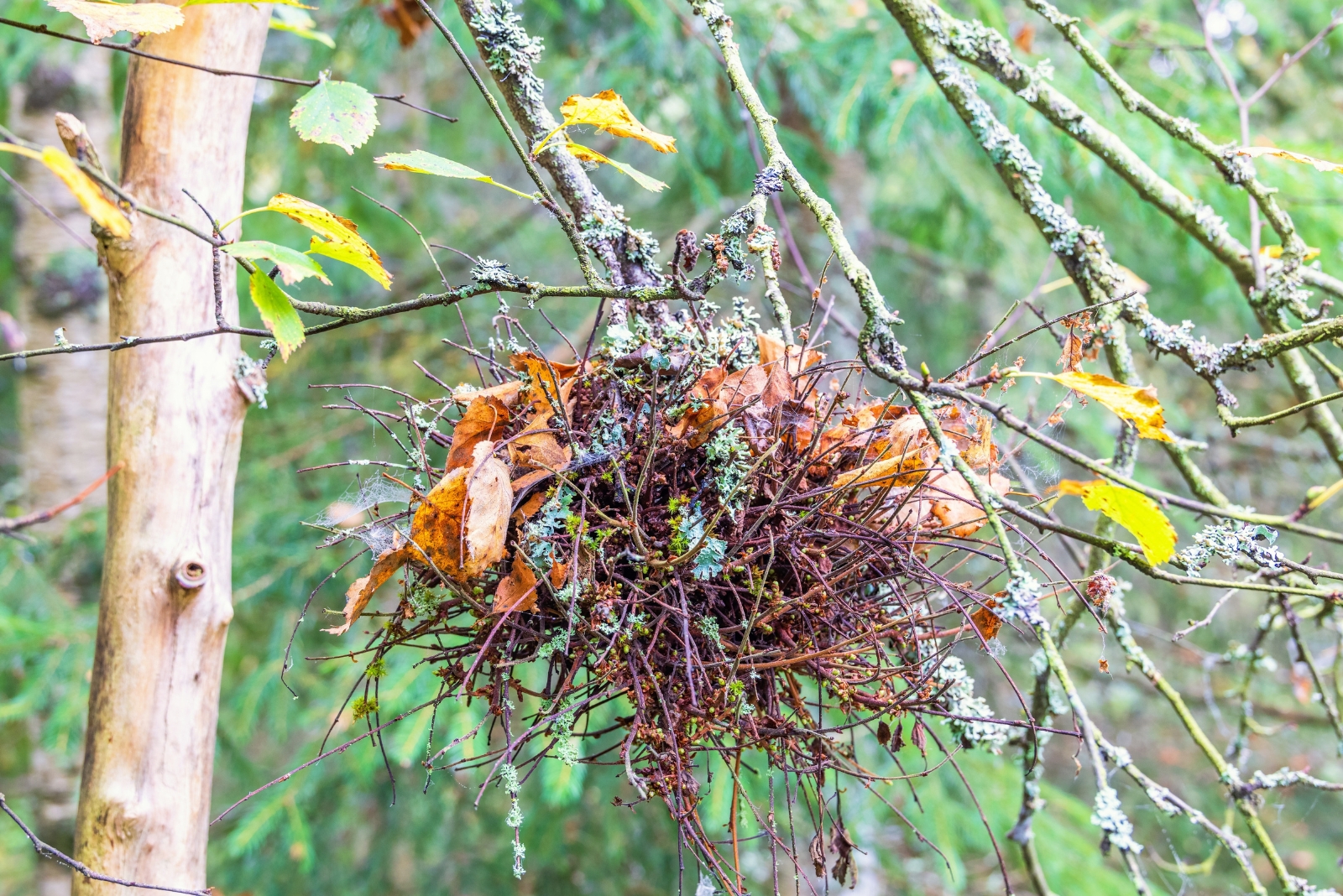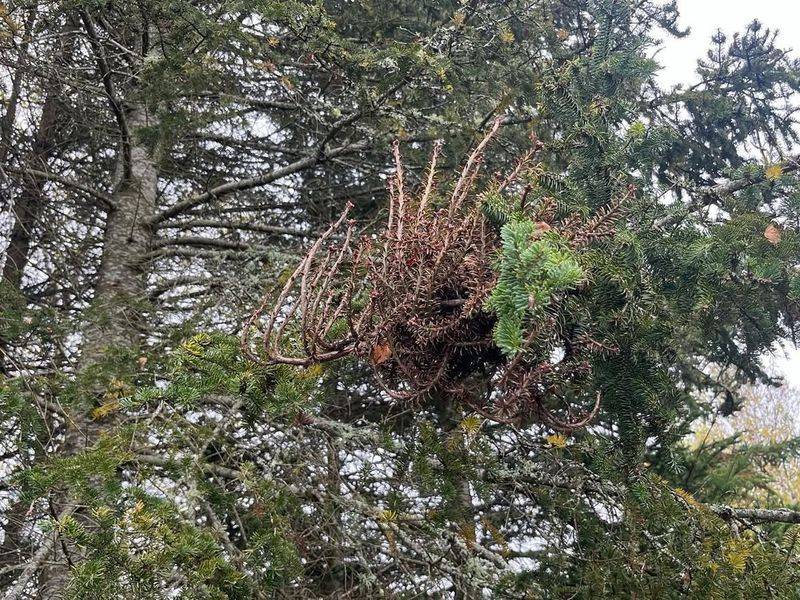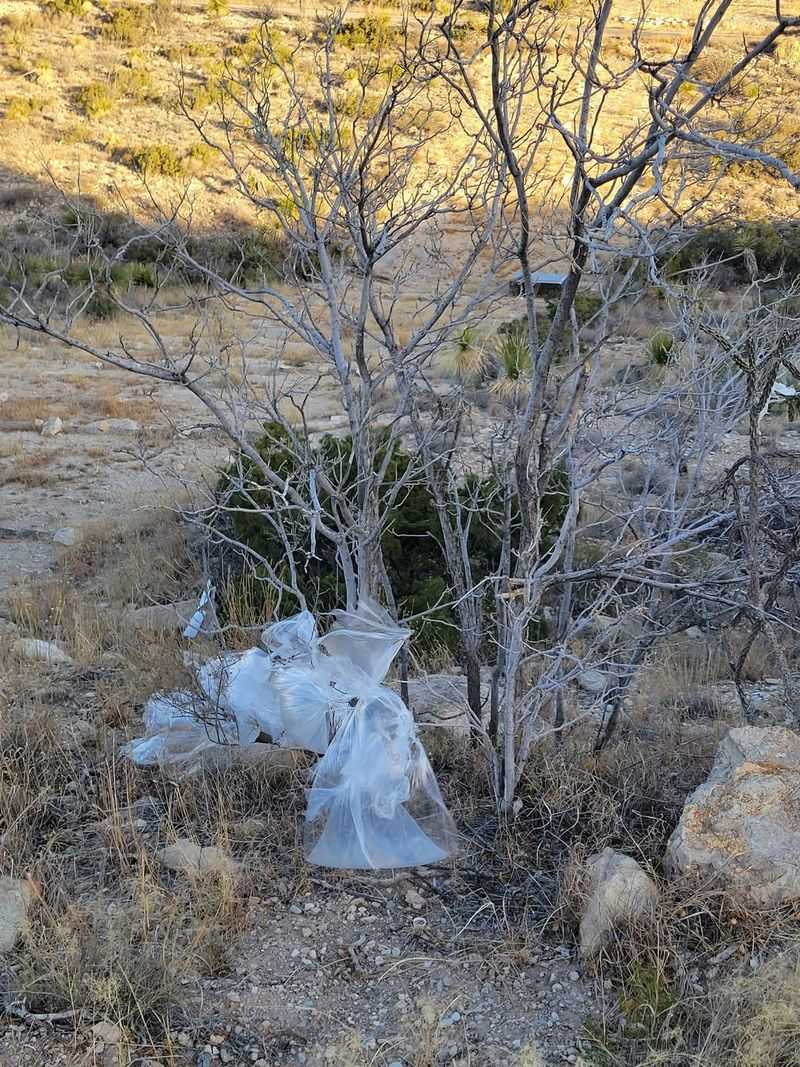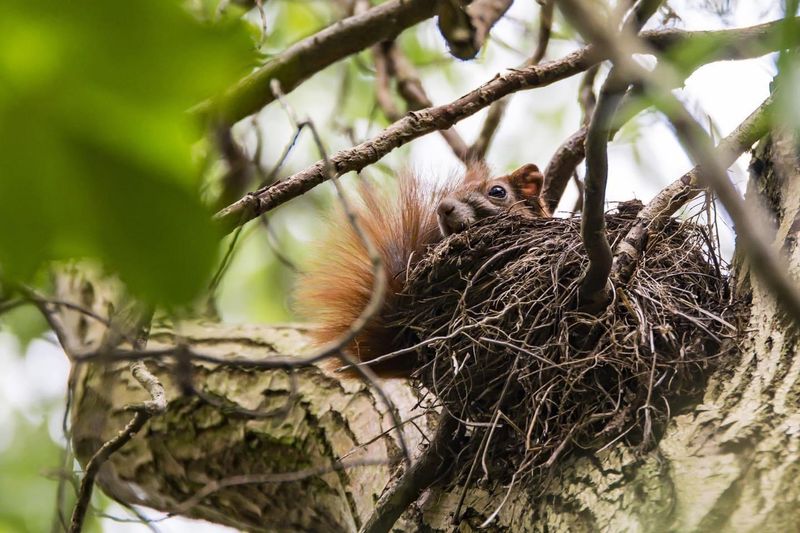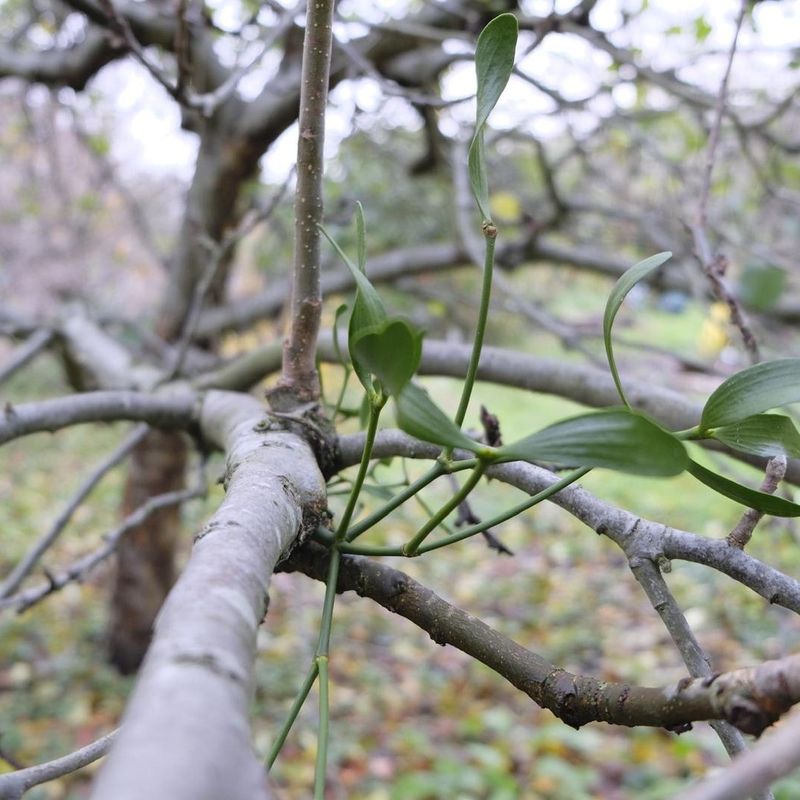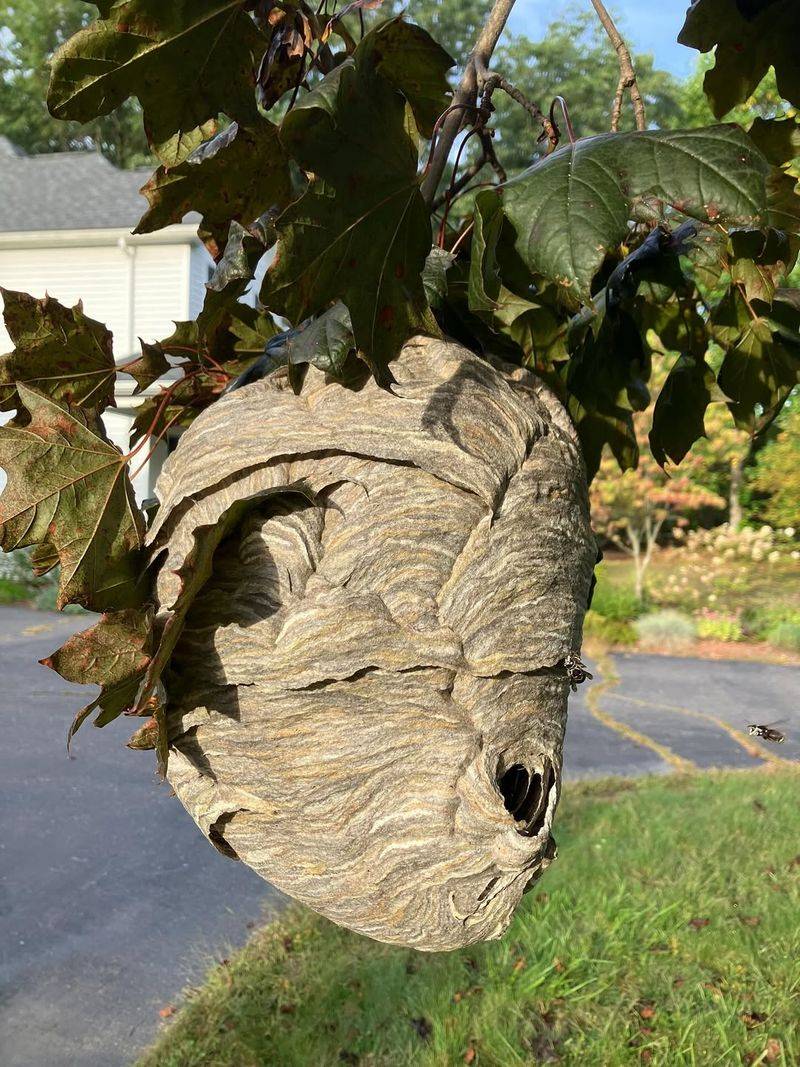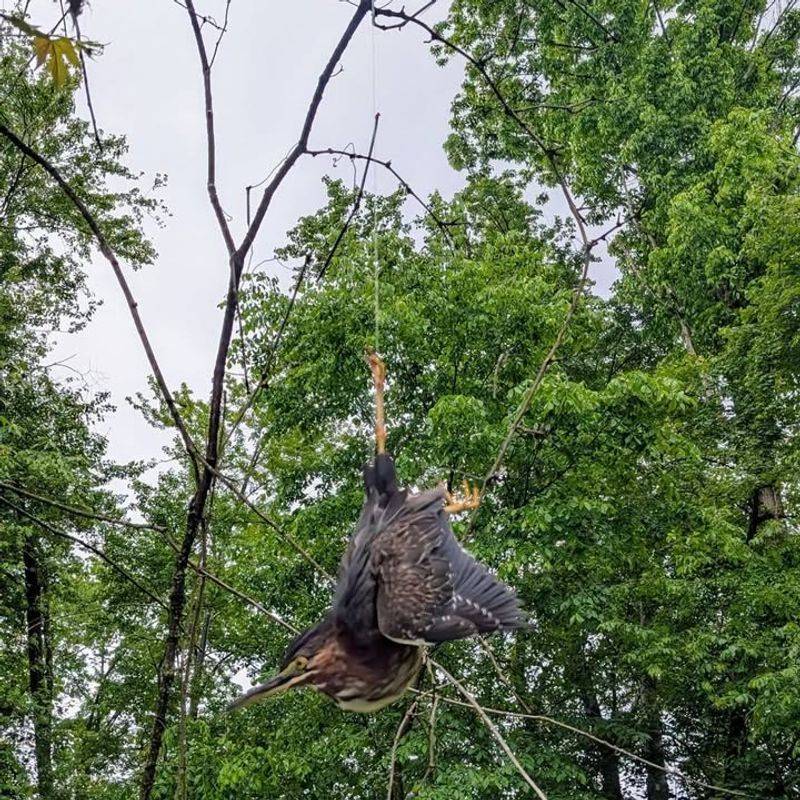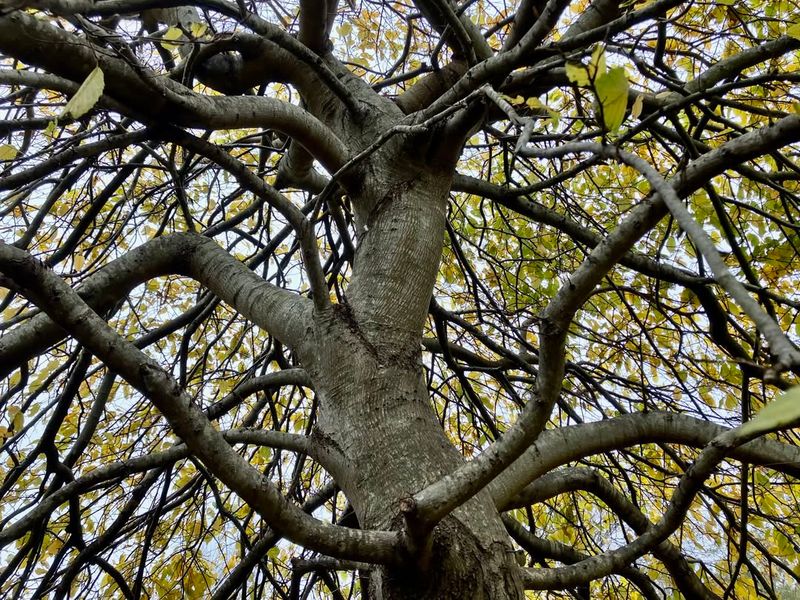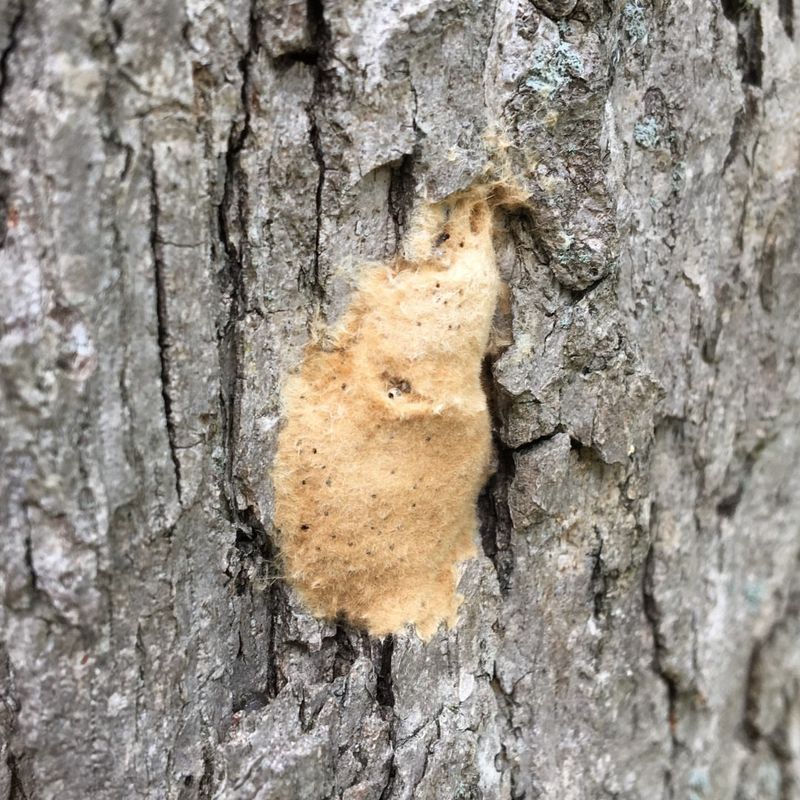Michigan trees hide some strange surprises that look like nests at first glance. Insects, fungi, or even leaf clusters can fool the eye.
Learning to identify these tricks keeps you from worrying unnecessarily. Once you know what to look for, tree-watching becomes a fascinating hobby.
1. Witches’ Broom Growth
A strange cluster of tangled branches might catch your eye and look exactly like an enormous bird’s nest. Actually, you’re seeing a plant disease called witches’ broom, which makes branches grow in wild, twisted patterns.
Fungi, insects, or viruses cause this odd growth pattern in Michigan trees. The branches bunch together so tightly that they create a round, nest-like shape that can last for years.
Look for these formations in maples, birches, and cherry trees across Michigan throughout all seasons.
2. Plastic Bags Caught in Branches
Windstorms blow all kinds of trash into Michigan’s trees, and plastic bags are the worst offenders. Once they catch on branches, they wrap around twigs and create shapes that really do look like nests from a distance.
Rain and sun break down the plastic over time, making it blend even more with the tree bark and leaves. Birds sometimes even incorporate these bags into their actual nests!
Michigan residents often spot these fake nests near shopping centers and highways where litter is more common.
3. Squirrel Dreys
Gray and fox squirrels build amazing homes called dreys that fool people into thinking they’re bird nests. Made from leaves, twigs, and moss, these round structures sit high in Michigan’s oak and maple trees.
Unlike bird nests, dreys are much larger and have a distinctive ball shape with walls several inches thick. Squirrels use them year-round for sleeping and raising babies, especially during Michigan’s harsh winters.
You’ll notice multiple entrances on these clever homes, which birds rarely include in their nest designs.
4. Mistletoe Clumps
Ever notice a green, bushy clump growing right out of a tree branch? That’s mistletoe, a parasitic plant that draws water and nutrients from Michigan’s hardwood trees.
During winter, when Michigan trees lose their leaves, mistletoe really stands out and looks remarkably like a leafy bird’s nest. The round, dense clusters can grow quite large over many years if left undisturbed.
Oak, elm, and maple trees throughout Michigan commonly host these unusual plants that confuse hikers and nature enthusiasts alike.
5. Abandoned Wasp Nests
Paper wasps build incredible homes that survive long after the colony dies off in Michigan’s fall season. Made from chewed wood fibers mixed with saliva, these nests have a papery gray appearance that mimics bird construction.
The round or teardrop shapes hang from branches and can measure basketball-size in older nests. Michigan’s bald-faced hornets create especially large versions that people frequently mistake for bird homes.
Winter reveals these architectural wonders when leaves fall away from Michigan’s deciduous trees.
6. Tangled Fishing Line
Near Michigan’s countless lakes and rivers, you’ll find something surprising in the trees: fishing line tangled into nest-shaped masses. Anglers accidentally leave behind monofilament that catches on branches and accumulates over time.
Wind and weather wrap the nearly invisible line around twigs, creating surprisingly solid-looking structures. Birds and small animals sometimes get tragically caught in these dangerous fake nests.
Michigan conservation groups regularly work to remove this hazardous material from trees along popular fishing spots and waterways throughout the state.
7. Leaf and Debris Clusters
Strong Michigan winds push leaves, twigs, and plant materials into tree crotches where branches meet the trunk. Over weeks and months, these materials pile up and compact into surprisingly neat, nest-like formations.
Rain helps mat everything together, creating structures that look intentionally built rather than randomly accumulated. Oak and maple trees with lots of branching forks collect these natural debris piles most often.
Fall storms across Michigan create the most convincing fake nests as millions of leaves blow through forests and neighborhoods.
8. Gypsy Moth Egg Masses
Walk through Michigan forests and you might spot fuzzy, tan-colored patches on tree trunks and branches that resemble tiny nests. Female gypsy moths lay hundreds of eggs together and cover them with body hairs for insulation.
Each mass measures about an inch or two long and has a felt-like texture that really does look like nesting material up close. Michigan has struggled with gypsy moth invasions for decades, making these egg masses unfortunately common.
Look for them on oaks, which these destructive caterpillars prefer throughout Michigan’s Lower Peninsula.

